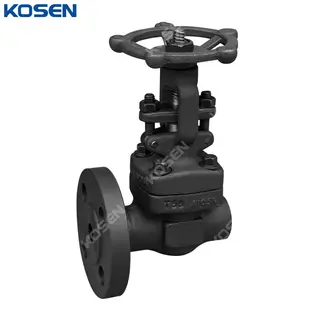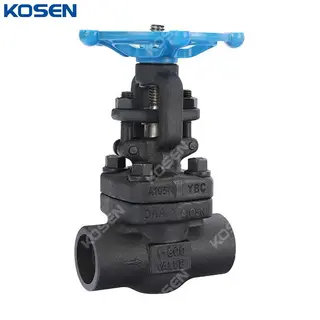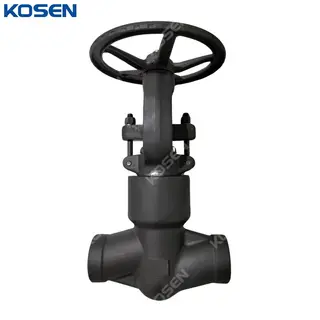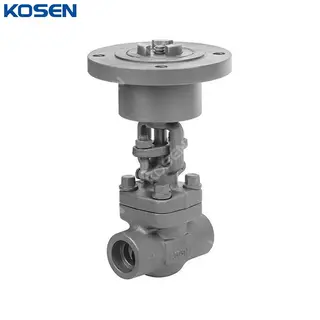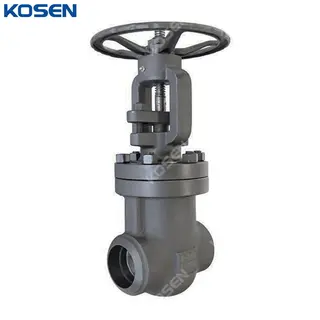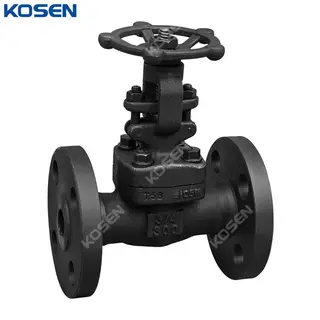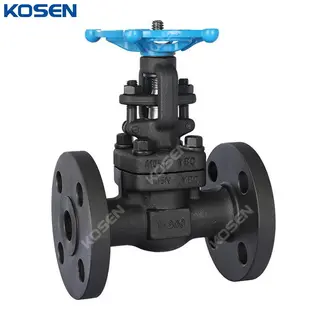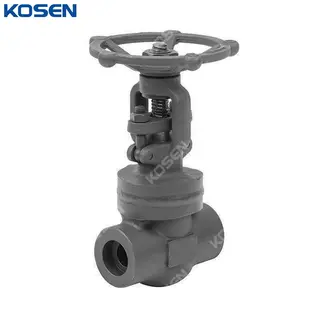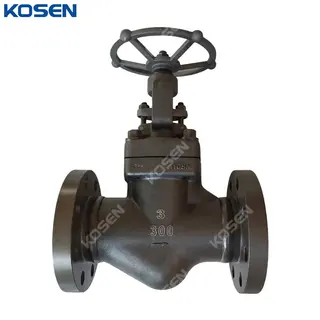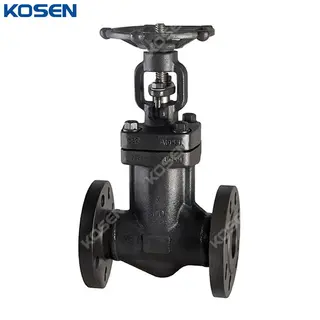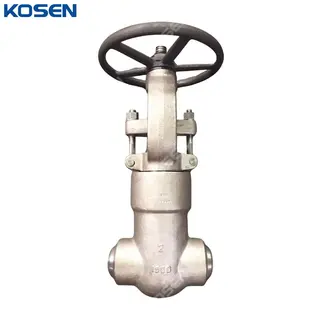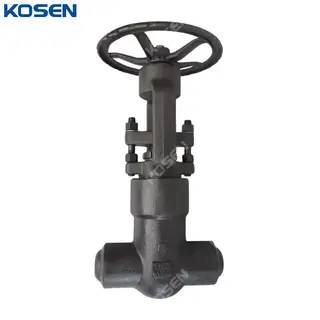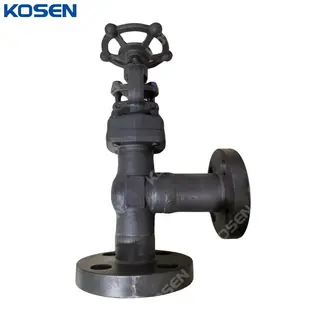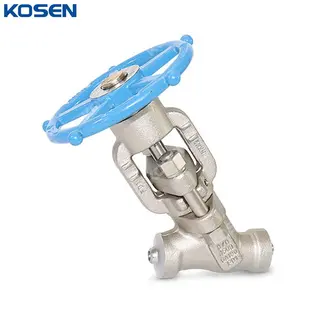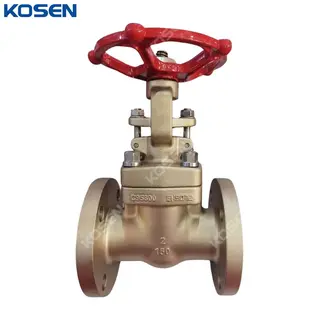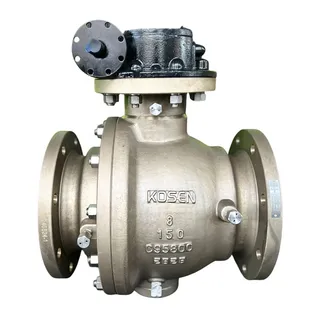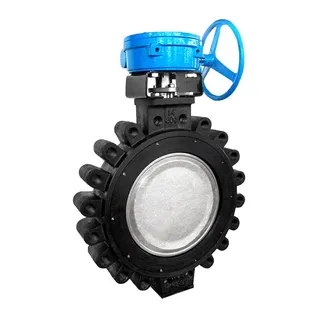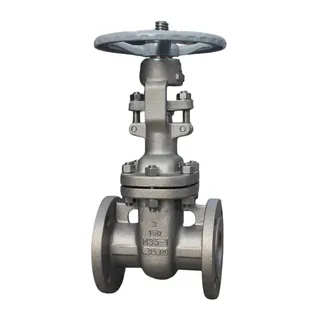The manufacturing process of forged steel valves involves several critical stages, each of which is essential to ensure that the final product possesses excellent performance and reliability.
The first step in the production of forged steel valves is material selection. Common materials include carbon steel, stainless steel, and various alloys, with the choice depending on the valve's application and operating conditions. To ensure the valve can operate effectively over an extended period, factors such as material strength, ductility, corrosion resistance, or high-temperature performance must be considered. Additionally, the material must comply with industry standards to guarantee the safety and functionality of the valve.
After material selection, the metal undergoes a heating process. The metal is heated to the appropriate temperature to achieve good plasticity, making it easier to shape. Precise temperature control during this stage is crucial to ensure the metal maintains uniform properties while undergoing deformation. Common heating methods include electric furnaces and gas furnaces, depending on the material and production scale.
Once the metal has been heated, it enters the forging stage, where it is shaped using mechanical or hydraulic presses. Forging methods include open-die forging, closed-die forging, and impact forging. The choice of method depends on the complexity of the valve design and the size of the components. During the forging process, it is important to ensure that the metal deforms uniformly to achieve the desired dimensions and shape.
After forging, the valve body undergoes precision machining, including turning, milling, and drilling, to refine dimensions and improve surface quality. Precision machining ensures the valve meets strict tolerance requirements and achieves a smooth surface to prevent leakage and ensure proper functioning.
Once machining is complete, the valve body typically undergoes heat treatment. This process involves heating the valve body to a specific temperature and controlling the cooling rate to enhance the metal's strength, hardness, and toughness. Common heat treatment methods include annealing, quenching, and tempering, which help improve the mechanical properties of the valve body and ensure its reliability in high-temperature or harsh conditions.
Strict quality checks and tests are essential during valve manufacturing. These tests include visual inspection, dimensional measurements, and functional testing to ensure the valve can withstand the expected operating pressures and prevent leakage. Additionally, non-destructive testing techniques, such as ultrasonic or radiographic inspection, are used to check the valve body for internal defects and ensure compliance with industry standards.
Once all manufacturing processes are complete, the valve undergoes surface treatment, including cleaning, coating, and assembly. The coating not only enhances the valve's corrosion resistance but also extends its lifespan. Finally, all components are precisely assembled and undergo a final inspection to ensure that the valve meets design specifications and is ready for use.
Forged steel valves are widely used across various industrial sectors due to their exceptional performance. The main advantages can be summarized as follows.
Forged steel valves can operate reliably in high-temperature and high-pressure environments, making them ideal for extreme conditions. Their unique self-sealing design improves the valve's sealing capability under increased external pressure, preventing negative effects on valve performance, especially in high-pressure environments.
Forged steel valves have a simple structure, are compact, and are lightweight, offering significant installation and operational convenience. Their lightweight design reduces the load on piping systems and enhances the efficiency of maintenance and replacement tasks, saving both time and labor costs.
The opening and closing of forged steel valves are straightforward, typically requiring only a 90-degree rotation to switch between fully open and fully closed states. With rapid opening and closing speeds, these valves enable precise fluid control, making them especially suitable for remote operations, significantly reducing manual labor needs.
Forged steel valves exhibit minimal resistance to fluid flow, with their resistance coefficient nearly equivalent to the length of a similar pipeline. This feature allows fluid to flow smoothly, reducing energy loss during transportation and helping to improve overall system efficiency and energy savings.
The plastic sealing surface of forged steel valves ensures exceptional sealing performance. This design is not only suitable for conventional fluid control but is also widely applicable in vacuum systems, meeting various industrial requirements.
6. Convenient Maintenance and Repair
Forged steel valves are designed with a simple ball valve structure, and the sealing rings typically feature a movable design for easy disassembly, inspection, and replacement. The design effectively prevents corrosion of the sealing surfaces, as the ball and valve seat are always isolated from the fluid, even when the valve is fully open or closed, extending the valve's service life.
Forged steel valves are primarily used in the following sectors.
Oil and Gas: Used in oil and gas extraction, transportation, and processing storage stages to control the flow of oil and gas, ensuring safety and stability during extraction, transportation, and processing.
Chemical Industry: Used in chemical production processes and pipeline systems to control the flow of highly corrosive, high-temperature, or high-pressure chemical media, ensuring production safety.
Power Generation: Used in boiler feedwater, steam, and cooling water systems in thermal and nuclear power plants to control fluid flow, ensuring the proper operation of power generation equipment.
Metallurgy: Used in steelmaking and continuous casting processes to control high-temperature, high-pressure gases and liquid media, ensuring smooth steel production and rolling processes.
When using and maintaining forged steel valves, it is crucial to pay attention to several details to ensure long-term stability and extend their service life. Key considerations include:
The amount of grease applied to forged steel valves significantly impacts their operation. If insufficient grease is applied, the sealing surfaces may lack lubrication, accelerating wear. On the other hand, excessive grease leads to waste. Proper grease calculation based on valve size and type is essential.
Grease pressure is another critical factor in ensuring effective sealing. Low grease pressure may result in poor lubrication, while excessive pressure can lead to hardening of the grease, clogging the injection point, or damaging the seals. The pressure must be adjusted based on the valve type.
When maintaining or servicing forged steel valves, it is essential to ensure that the valve is in the correct open/close position, such as keeping a shut-off valve closed during grease injection to ensure uniform distribution of grease.
Before grease injection, forged steel check valves must be flushed and relieved of pressure to ensure proper grease application and prevent issues due to internal gas or water pressure.
During lubrication, ensure that the grease exits in the correct sequence to ensure that it is evenly distributed on the sealing surface for optimal sealing performance.
For forged steel extended-end gate valves, the alignment between the valve bore and seal seat must be checked to ensure proper sealing and valve function.
High-pressure forged steel gate valves typically feature flat or conical sealing surfaces and may have different stem movements. Low-temperature forged steel valves require specific considerations, particularly when dealing with fuel oils.
It is important to ensure proper lubrication of stem areas, which may include sliding bushings or packing to minimize friction and prevent wear.
The differences between cast steel and forged steel valves primarily lie in the following aspects.
Cast steel valves are made by melting metal, pouring it into molds, and cooling it to form the desired shape. This process is suitable for manufacturing parts with complex shapes. Forged steel valves are made by heating metal to a plastic deformation temperature and using forging techniques, which results in a more uniform structure and superior mechanical properties.
Cast steel valves have a looser structure with potential defects, such as porosity or inclusions, due to the casting process. In contrast, forged steel valves have a denser, more uniform internal structure, providing better toughness and impact resistance.
Cast steel valves are typically used in lower-temperature and medium to small diameter applications, while forged steel valves are suited for high-temperature, high-pressure, and large-diameter applications, such as those in the oil, chemical, and metallurgy industries.
Cast steel valves generally exhibit lower impact strength and pressure resistance, whereas forged steel valves offer superior strength, toughness, and resistance to impact and pressure, making them suitable for more demanding environments.
Cast steel valves are less expensive to manufacture due to the simplicity of the casting process, while forged steel valves are more costly due to the complex forging process and higher equipment requirements.

